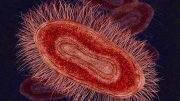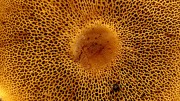Researchers from the University of Valencia (UV) have confirmed the presence of several illegal drugs in the canals and irrigation channels in L’Albufera Natural Park, Spain. Recently similar substances and other pharmaceuticals have turned up in drinking water samples in North America.
Yolanda Picó, leader author of the study and senior professor in the department of nutrition and bromatology at UV said, “The results confirm the presence of drugs such as cocaine, amphetamines, codeine, morphine and cannabis in the surface waters of the L’Albufera National Park at levels ranging between 0.06 and 78.78 nanograms per litre.”
One nanogram (ng) is equivalent to one billionth of a gram.
What the researchers were detecting were residues these substances leave behind in human urine once the have been taken, which eventually ends up in the water after being treated by the sewage system.
The study findings show that the highest drug concentrations were from the north of the park where the population is the densest.
Other studies based in Italy have shown that these substances are able to pass standard water treatment processes that typically remove metals, toxic substances and organic waste.
As for the contaminated water in Spain, eco-toxicological studies have yet to have been performed so it is not certain if the contaminated water could pose a threat to people or the eco system.
“The health problems potentially caused by consuming these, added to the fact that these residues are still strongly pharmacologically active, may have consequences for land organisms and aquatic fauna,” said Picó.
Legal drugs and pharmaceuticals are also finding their way through water treatment systems in the United States and ending up in rivers. However, National Geographic reports that according to the U.S. Environmental Protection Agency (EPA), there has been no reported effect on people.
There are findings that prove that contaminants such as hormone altering drugs like birth control and endocrine disruptors found in some pesticides are causing fish to become intersex, a condition where male fish develop premature egg cells.
“In 2002 we were looking at stream-water chemistry to understand the large fish die-offs at these sites. It was then that we found smallmouth bass with intersex,” said Douglas Chambers, a scientist from the U.S. Geological Survey.
The research also discovered that even the non-intersex fish had traces of contaminants in their blood plasma.
Further studies are underway to better understand the “cocktail” of compounds found in the rivers that are causing the feminization of male fish in hopes to understand their effects on humans who also consume this water.
The EPA says that 90 containments must be removed from water sources before it is safe for drinking water, and recommends that citizens should take charge and be aware of their community’s water quality control.




